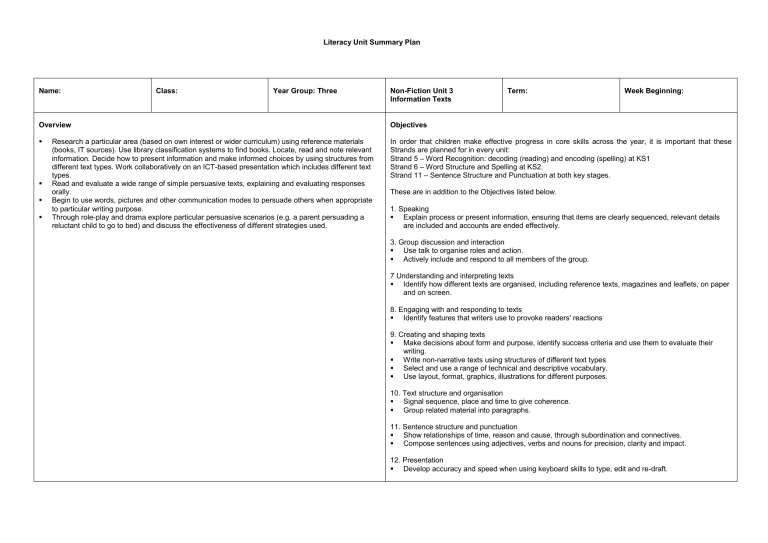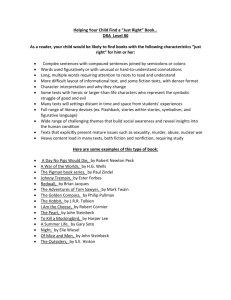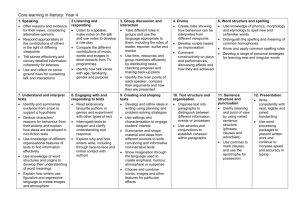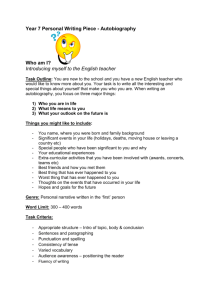Information texts

Literacy Unit Summary Plan
Name: Class: Year Group: Three
Overview
Research a particular area (based on own interest or wider curriculum) using reference materials
(books, IT sources). Use library classification systems to find books. Locate, read and note relevant information. Decide how to present information and make informed choices by using structures from different text types. Work collaboratively on an ICT-based presentation which includes different text types.
Read and evaluate a wide range of simple persuasive texts, explaining and evaluating responses orally.
Begin to use words, pictures and other communication modes to persuade others when appropriate to particular writing purpose.
Through role-play and drama explore particular persuasive scenarios (e.g. a parent persuading a reluctant child to go to bed) and discuss the effectiveness of different strategies used.
Non-Fiction Unit 3
Information Texts
Term: Week Beginning:
Objectives
In order that children make effective progress in core skills across the year, it is important that these
Strands are planned for in every unit:
Strand 5 – Word Recognition: decoding (reading) and encoding (spelling) at KS1
Strand 6 – Word Structure and Spelling at KS2.
Strand 11 – Sentence Structure and Punctuation at both key stages.
These are in addition to the Objectives listed below.
1. Speaking
Explain process or present information, ensuring that items are clearly sequenced, relevant details are included and accounts are ended effectively.
3. Group discussion and interaction
Use talk to organise roles and action.
Actively include and respond to all members of the group.
7 Understanding and interpreting texts
Identify how different texts are organised, including reference texts, magazines and leaflets, on paper and on screen.
8. Engaging with and responding to texts
Identify features that writers use to provoke readers' reactions
9. Creating and shaping texts
Make decisions about form and purpose, identify success criteria and use them to evaluate their writing.
Write non-narrative texts using structures of different text types
Select and use a range of technical and descriptive vocabulary.
Use layout, format, graphics, illustrations for different purposes.
10. Text structure and organisation
Signal sequence, place and time to give coherence.
Group related material into paragraphs.
11. Sentence structure and punctuation
Show relationships of time, reason and cause, through subordination and connectives.
Compose sentences using adjectives, verbs and nouns for precision, clarity and impact.
12. Presentation
Develop accuracy and speed when using keyboard skills to type, edit and re-draft.











